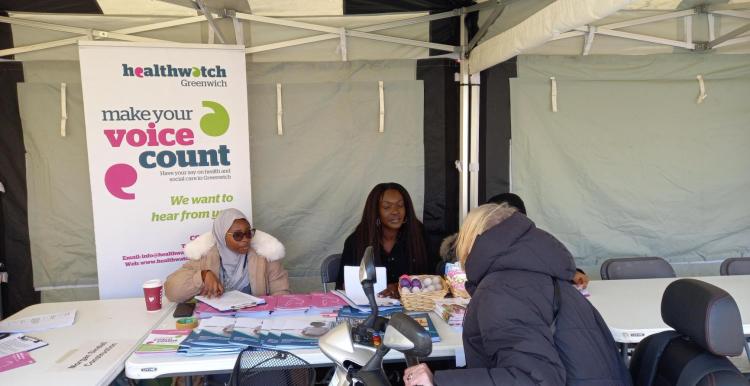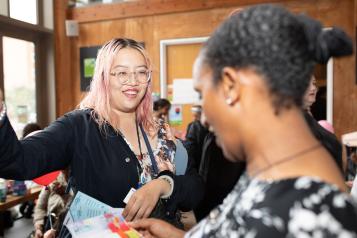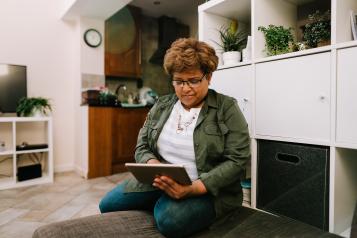Women’s health screening: A choice for some, a privilege for others

When we talk about health, we often emphasise personal responsibility—eating well, exercising, attending regular health screenings. But for some women, particularly those facing systemic inequalities, the idea of choice is not that simple. In reality, for some, the ability to access women’s health screenings—critical for early detection and treatment—is a privilege, not a choice.
Barriers along the way can make it harder for women to benefit fully from screening programmes. These are not just at the point of the screening being carried out, but throughout the entire process, from receiving the invitation, navigating the NHS, to getting referrals and treatment.
We spoke to over 40 women from different backgrounds, ethnicities, and ages, about their cervical or breast screening experiences. While some had a seamless pathway, excellent information, clear instructions, prompt appointments, empathetic and sensitive treatment and communication, rapid results and follow-up where needed, not all women had such a positive experience.
Information and Access Hurdles
The first difficulty some women face is not receiving the right information—or any at all—about screening. We found this was particularly true for women new to the UK and unfamiliar with how the NHS works. Women from the global majority and those not fluent in English were also more likely to tell us they’d not received any or enough information.
Magda, who had recently moved to the UK, shared her experience: “…never had one [cervical screening] in my life [in my country], I didn't know I could get tested, I moved to the UK recently and I didn't know I could get a test about that.”
Devi, originally from Nepal, noted that while the NHS promises free healthcare, it often felt inaccessible.
In Nepal, you pay to go to the doctor. But here, universal healthcare is kind of tricky to navigate. When I called the GP to get more information on how to go about the [cervical screening] test, the receptionist said, ‘Oh, we don’t do that here, it's a different process.’ That’s it. That was all the information I got.
For some women, these early experiences with the system are enough to discourage them from taking up opportunities for women’s health screening altogether. Others push forward but find the obstacles don’t end at receiving an appointment.
Physical Barriers and Exclusion
Accessibility for women with disabilities is often overlooked in the design and delivery of women’s screening services.
Nina, a wheelchair user, told us: “For wheelchair users, we can’t have breast screening because we can't stand. What other measures are in place for people like us?... They always promise things, but nothing is done.”
For some women, it’s not a lack of information or access, but poor coordination and communication within the system. Refilwe, 29, shared her postpartum experience:
I went for the [cervical screening] test and the examiner told me I wasn’t eligible because I was only six weeks postpartum, but you have to be 12 weeks postpartum. I said, ‘You have my file, you should have known that before I came in.’ But I still had to make the journey.
Anxiety, Confusion and Misinformation
When complications arise—such as being called back for further tests or treatment—the system can become bewildering. Anxiety, confusion, and the complexity of managing appointments leaves some women feeling in the dark and unsupported.
Amy told us about her experience:
I had pains in my breast, was examined, and referred, but no one told me what procedures were going to take place. The instructions were unclear.
Rita echoed these concerns, saying, The instructions were unclear, there was no one to ask on-site, the directions and signs [for a colposcopy appointment] were unclear or missing.
These experiences suggest that while screening is promoted as a vital tool for women’s health, barriers along the way can make it much harder to access.
Inequality
Breast and cervical cancer remain significant causes of cancer-related deaths among women in the UK, particularly among women facing socio-economic disadvantage and systemic exclusion. While women’s health screening is promoted as a matter of individual choice and responsibility, it can reinforce existing inequalities. For women already disadvantaged by factors like immigration status, disability, lack of healthcare literacy, or previous poor experiences, each additional barrier they face can reduce their chance of accessing women’s health screening.
We spoke to over 40 women about their experiences of screening. These conversations took place over three different projects between October 2023 and April 2024.
In October 2023, we surveyed people about their experiences of outpatient services at Queen Elizabeth Hospital. Of these respondents, several women also shared their experiences with mammography and colposcopy appointments.
Between December 2023 and January 2024, we conducted semi-structured interviews with women of Black British African and Asian Nepali ethnicity, all aged between 25 and 29. This research was commissioned as part of the Healthwatch England research on women’s screening, now published in their national report titled Cervical Screening, My Way.
In April 2024, we spoke to women about their experiences of screening at our Women’s Day engagement event at General Gordon Square. More than half of those we spoke to were from global majority backgrounds and more than half were aged between 19 – 34.


